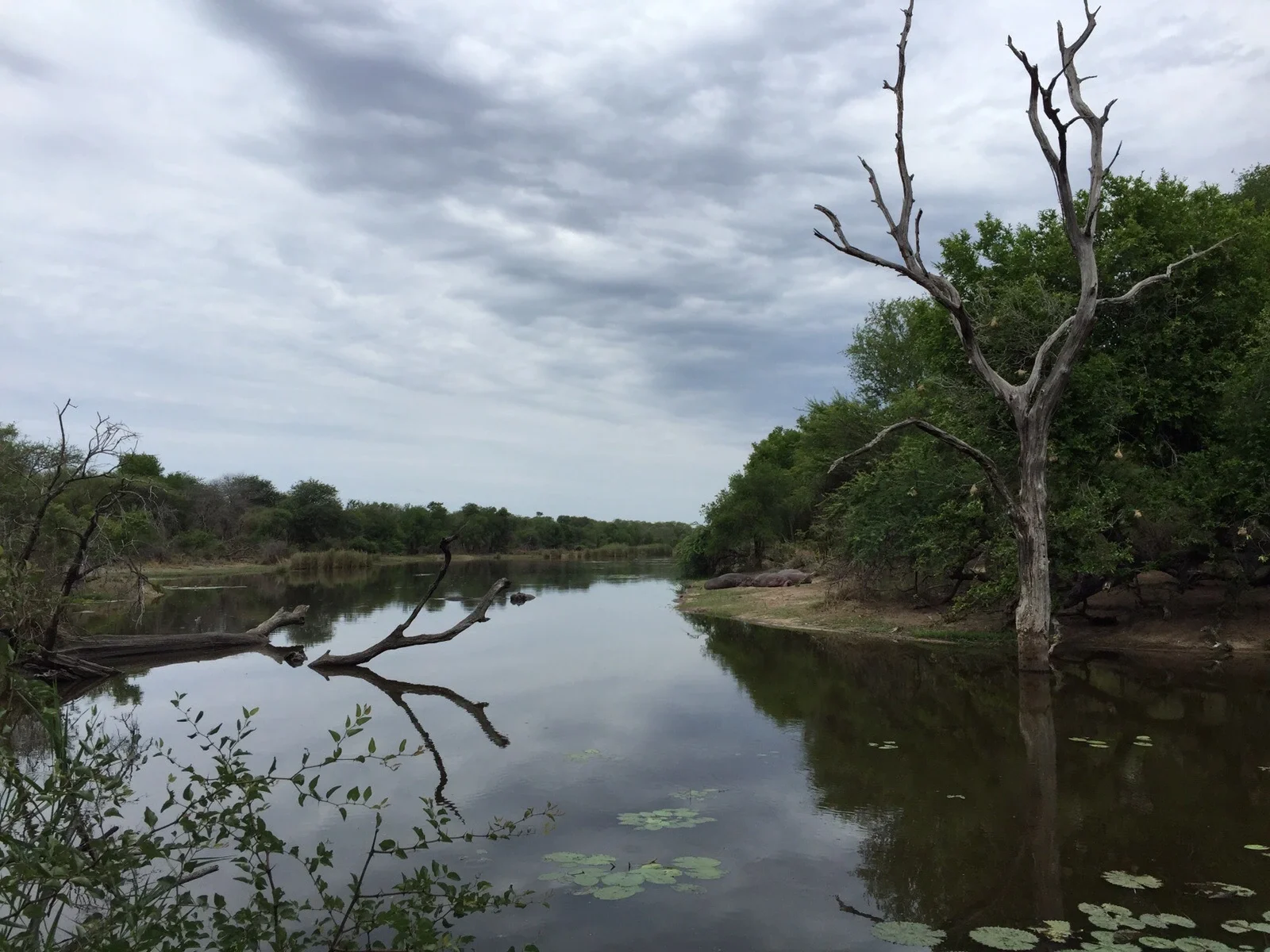The climate of the Kruger National Park is subtropical. There is a rainy and dry season which means summers are very wet, winters extremely dry. The chance of rain in the winter months is very small and the sun shines almost constant during this period. The temperature differences between winter and summer are not big during the day, but at night there are reasonable differences. In winter it can really cool down at night and those early mornings.
The best time to go to Kruger Park is in the dry winter. Due to the drought, the vegetation is less dense and high, which makes it easier to spot animals. In addition, the temperatures are more pleasant for humans and animals, which translates into more wildlife activity which is especially noticeable in the morning.

The Dry Season
The months of May through September are the winter months and dry season in Kruger National Park.
During the entirety of winter, there is almost little chance of receiving any kind of precipitation, and the relative humidity level is quite low. When water is in short supply in the wilderness, animals are more likely to congregate around stable water sources.
May represents the end of summer and ushers in the beginning of autumn. Temperatures are dropping and will normally be 5 degrees Celsius in the morning and 25 -27 degrees Celsius in the midday. Morning game drives in open vehicles throughout the months of June, July, and August will be chilly, so it is recommended that you take thick winter gear. The temperature in the morning typically may be 2 degrees Celsius. The afternoons will be very comfortable with temperatures around 22-24 degrees Celsius and clear skies. The months of June and July are the coldest periods in the Park.
September is the month in which the temperature rises gradually to approximately 29 degrees Celsius in the miday, and the first showers in November bring relief from the extremely dry circumstances. Temperatures in the morning may roughly be around 10-14 degrees Celsius.
During these periods animals will typically congregate around water sources so the chances are great that you may have some sightings at the waterholes and dams though morning/ evening game drives can be very chilly. There is very little chance of rain and humidity isn’t very high but during the nights, temperatures can drop rather low.
During this time, the vegetation is very dry so it isn’t very visually appealing, but it is the high season where the Park can get rather crowded.

Wet Season
The months of November to April mark summer in the Kruger National Park and surrounding reserves.
In the summer, the temperature and humidity can reach very high levels. Although daytime temperatures are typically around 32-35 degrees Celsius with a significant level of humidity, maximum temperatures frequently go well above 40 degrees Celsius. Although it is unusual to rain continuously throughout the day, afternoon storms are typical.
During the month of late November, the temperature rises, and it begins to rain more frequently, most of the time in the afternoon. Temperatures range from 18 degrees Celsius in the morning to 31 degrees Celsius in the afternoon.
The months of December, January, and February are the hottest and wettest of the year. These months are distinguished by heavy downpours in the afternoon and a high level of humidity. Temperatures in the day often hover around 32 degrees Celsius but can climb to an intolerable 40 degrees Celsius at any time.
In March and April, there is less precipitation, and the temperature gradually drops. The month of April often has beautiful weather with very few clouds. The evenings become slightly chillier but are still comfortable, averaging around 18 degrees Celsius. Temperatures throughout the daytime hover about 30 degrees Celsius, and the humidity gradually lowers.
After the rains, vegetation is beautifully lush and green with many newborns running around. Though the vegetation is so beautiful, it becomes much thicker and dense, so animals become less visible.
Due to this period being the low season, camps and roads tend to be much quieter.
With the high temperatures, humidity and rains, there will be plenty of mosquitos which means there is a small chance of contracting Malaria.
Kruger National Park is in a malaria zone, but there is only a very low risk during the wet summer months. You should protect yourself at this time by wearing appropriate clothing and applying mosquito repellent.
Seek medical advice about antimalarial profolatic options and whether they are required before your trip. Several vaccinations are also advised when visiting South Africa in general and Kruger in particular.
Unlike many other African countries, South Africa does have four distinct seasons. The months of May through September are normally the drier months, which cover winter and spring season.
These months are perfect for going on game drives and participating in other types of outdoor excursions.
October to April is the wet season, including some of autumn and summer.
This is a good season for bird watching, and even then, rains are frequently short showers that are unlikely to hinder your trip. The months of December through February are extremely warm (what the Northern Hemisphere would consider summer).
We are now entering May, being our dry season, so it is the perfect time to explore the Kruger National Park and Manyeleti Game Reserve. Our chances of spotting that illusive Leopard and other wonderfully rare species, will be much improved. So Join us this winter and let’s see what we will find.
